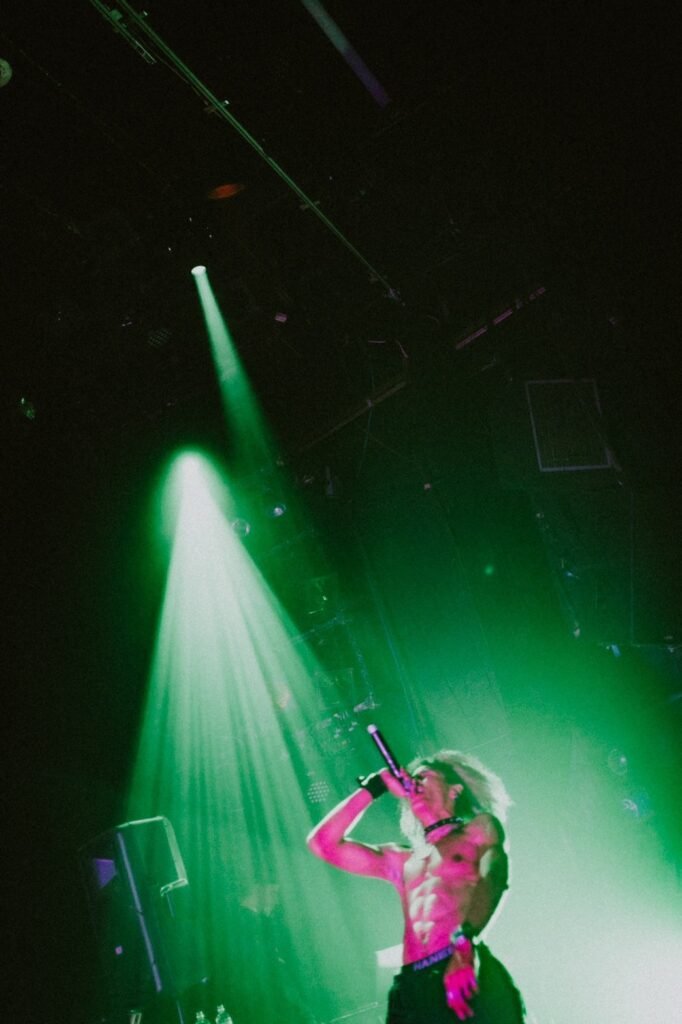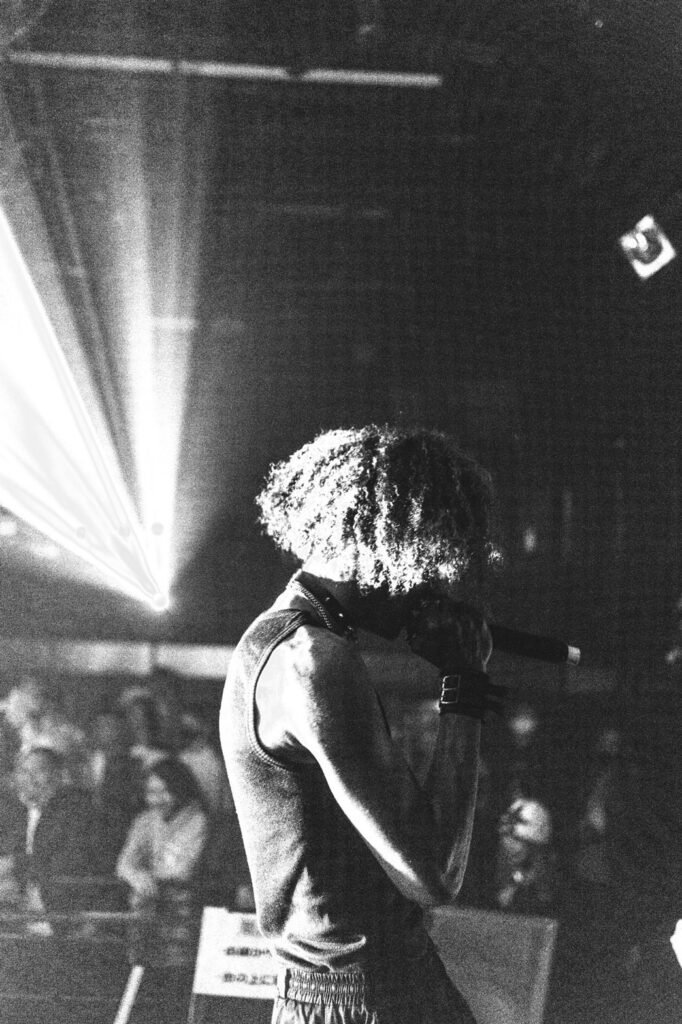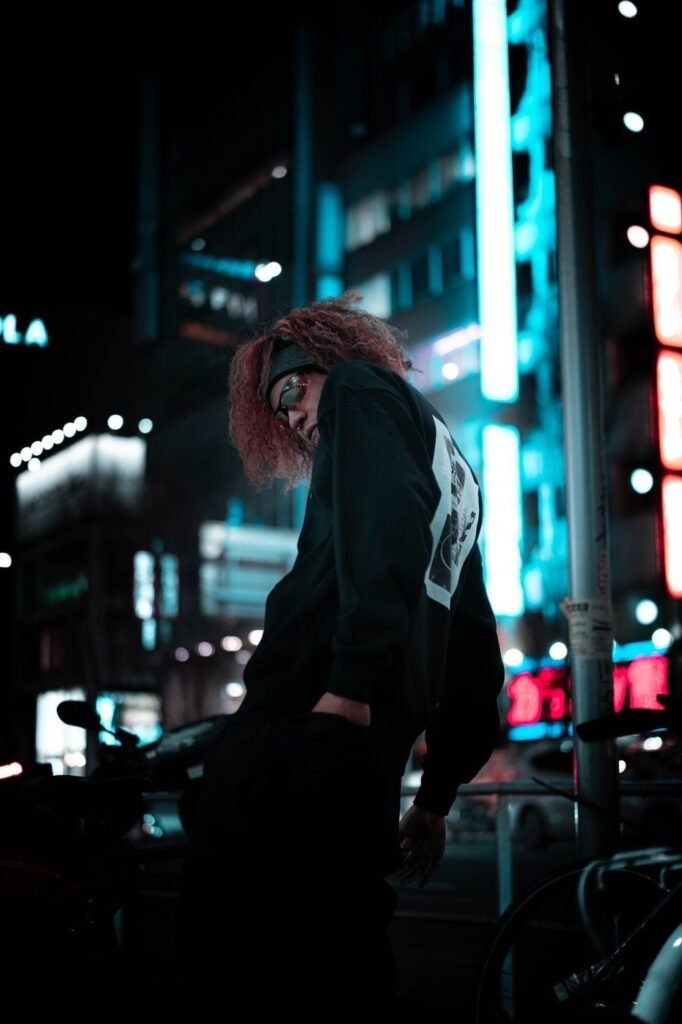Interview by Katarina Mladenovicova
Exploring different genres and platforms, the American creator Ocean also known as DOT.KAI shares with us his journey through the Japanese music scene, from creating music in English, to learning and dedicating his songs in Japanese, his creative process and his experience as an artist with blockchain and NFTs.
Hi Ocean, can you start by telling us more about yourself?
So, I create music and art under the name DOT.KAIi. I’m from North Carolina and I first came to Japan in 2015, to study abroad at Doshisha in Kyoto. After eight months I went back to the US and graduated. I then found a programming job at Rakuten during this crazy career forum with Japanese firms in Boston. It was funny because me and my friends were probably one of the only ‘foreigners’ at this forum even if two of them were Japanese American. The forum was actually created for Japanese students abroad who missed out on opportunities while studying in the US. But we managed to get jobs and a visa which allowed me to come back when I graduated.
And how come you moved to Japan in the first place?
When I was like five, six years old I was really into Power Rangers, Godzilla, Dragon Ball Z and stuff. But then, as I got into high school, I was really into skateboarding and got into streetwear. This kind of bridged over to getting into Japanese streetwear, and then Japanese fashion, and bigger brands like Johji Yamamoto and Issey Miyake, … So there’s just a lot of cool Japanese stuff where I was like ‘Oh yeah, no, I need to go check it out’.
Now about music, how did you get into it and how did your career evolve?
I started music when I was 17, when I went to university. I started a group of like 15 people like a Brockhampton-esque type thing. We did that for a while, we did like four projects. And we actually disbanded when I came to Japan the first time. That’s when I got more into dj-ing and visual art. But then I kind of just stayed on that for a while, and when I came back to Tokyo, the Dosing group, who already supported me when I was in Kyoto, asked me to join them. They started off pretty early when Tokyo Vitamin started and they used to do a lot of events together. They were a creative collective, within which they were trying to create a trap metal band. So, they asked me to come on and bring some vocals. So we did that for two years and, I especially worked a lot with Tohji, Ralph, and Stei and people like that.
It was cool, it got me into the Japanese rap scene but all our lyrics were still in English, and all the Japanese lyrics were left over to the Japanese artists we were working with. After that we kind of hit some bumps in the road as a group, this is when I just decided to keep doing stuff on my own. My focus was on trying to make my music more accessible to the Japanese public. It seemed like that was the problem with our work. You know we would get the shows, we would get some songs doing pretty well, and people knew what the name was. But they wouldn’t stick around … Because I guess it wasn’t as accessible as Japanese artists. And it’s funny because we all took separate paths, but we did the same thing. Everyone buckled down, studied a lot of Japanese songwriting, and started putting out songs in Japanese.

And can you tell us more about the transition to writing in Japanese? It must have been an interesting challenge …
I think it’s kind of interesting because now I actually sometimes like writing the songs in Japanese more. I mean it’s just an alternative creative process. Your brain is thinking in a slightly different way. I think the biggest thing at first was trying to figure out how to not make it sound corny, ’cause I’m not the first foreigner to rap in Japanese, right, but not many have done it well – laughs – It’s just really easy for you to say just kind of N3 / N4 (basic Japanese levels) words and it comes off kind of funny, when it’s not just about the vocabulary, the Japanese structure of rhyme is actually different. And then it’s like you have to really tap into what Japanese artists are doing. So I spent a long time, like a year, only listening to Japanese music. So I could get my brain to start thinking in Japanese and then I would look at the lyrics of the songs I liked and I would bring up the lyrics at home and I would just memorize the whole song.
You mentioned trap metal earlier, is that still what you’re making today?
So when I was with the group Dreaming of Screaming, within Dosing, whose name was Dreaming of Sleeping we were like a little mini trap metal band inside it. It was a pretty aggressive style but also very niche. And today I think I’m wavering between just different levels of experimentation and alternative rap. So like on the album some of it is more pop, some of it’s more industrial. It just goes all around.
What would you say was added here, obviously a different language, but was there something else?
So I’ve heard some less tangible things, people tell me ‘oh, it’s the sound of the music that’s different’, like there are some slight nuances in the keys or what instruments are being chosen. Something you couldn’t really put your finger on. But also I think we’re just telling different stories out here. Even if some of it is in Japanese and people wouldn’t understand, that’s why I try to mix both English and Japanese. Or even using things like music videos and visuals, you can tell this story of how we, as foreigners, can kind of do cool things out here, and also show how we explore things in a different way than a Japanese person could maybe do.
We talked about writing, but what would be your usual creative process?
It’s super weird … If I’m making a song, it’s me and Arran … Oh I’m sharing like trade secrets right now – laughs – but we get on the computer, he gets on a synth, and he just starts playing stuff and I just start making noises, like really weird noises. Then, we’ll build a vocal chain up with different effects and we’ll just see how it sounds and we’d just mess with it live. We’d do a bunch of run-throughs and then we’d just be like ‘alright, here’s ten minutes of sound and like flows that aren’t actually legible words, let’s cut them up and rearrange them and see what we can do!’
And now that you are creating in Japanese, has that opened new doors for you, outside of the international bubble?
I think it’s still definitely slow, but on the last album, I think outside of Teddy, all the features were Japanese artists, so it was like Jinmenusagi, who I’ve been working with for a while, Steffen, or Jeter. And this isn’t just about working with them. But I also think you have to go past, just like setting up a session, but become friends with people and learn like ‘o, so how do Japanese artists navigate in the Japanese space? What events are they going to? How can I support their part of the scene?’
It is slow, but they do reciprocate that over time and it helps a lot and you get good feedback. They even helped me a lot with the lyrics and all, they would tell me if something sounds off ’cause you know, of course, I can’t write it perfectly, even artists like a SEEDA, a bigger artist who’s more established from like the early 2000s. Everyone has been very accepting so if you try to really get into it, it works well.
With things starting to come together for you here in Japan, would you want to go back and start again back home?
Yeah, the idea originally was like let’s re-export this brand because, you know, hip hop is already an exported cultural asset from America to Japan, and it’s like what if we, from Japan, take back the culture that we already exported and then repackage it in Japan and then re-export that back to the West.
What would you say was added to here, obviously a different language, but was there something else?
So I’ve heard some less tangible things, people tell me ‘oh, it’s the sound of the music that’s different’, like there’s some slight nuances in the keys or what instruments are being chosen. Something you couldn’t really put your finger on. But also I think we’re just telling different stories out here. Even if some of it is in Japanese and people wouldn’t understand, that’s also why I try to mix both English and Japanese. Or even using things like music videos and visuals, you can tell this story of how we, as foreigners, can kind of do cool things out here, and also show how we explore things in a different way than a Japanese person could maybe do
We talked about writing, but what would be your usual creative process?
It’s super weird … If I’m making a song, it’s me and Arran … Oh I’m sharing like trade secrets right now – laughs – but we get on the computer, he gets on a synth, and he just starts playing stuff and I just start making noises, like really weird noises. Then, we’ll build a vocal chain up with different effects and we’ll just see how it sounds and we’d just mess with it live. We’d do a bunch of run-throughs and then we’d just be like ‘alright, here’s ten minutes of sound and like flows that aren’t actually legible words, let’s cut them up and rearrange them and see what we can do!’
That’s a pretty cool creative process, I wasn’t expecting that – laughs –
Yeah, like most people, I think you think they write first right? But yeah, we do the opposite, we call them audio sketches, so it’s just really loose, just an idea of like a melody and a flow, the chord progression, the rhythm. Then, we kind of start writing words in and doubling down and building the transitional parts and so. It’s kind of fun.

OK, now completely on another note, but I saw that you created NFTs, how did you decide to get into that? And do you think it’s important for young artists to explore the platform?
Basically the artist I worked with on the last album, who produced all the tracks with me and did all the instruments and most of the beats, his name is Arran, and he works with Ibn Inglor. And Ibn had basically gotten into NFTS really early, sometime in 2021, around March. And has basically been mentioning in passing to Arran and saying things like ‘you know you guys should try this out’. And then he sold one and once you get that like cash influx and you can see your friend just made 3K off a song, then we’re like ‘Ok, let’s try it’. So he got us onto this platform, through someone we knew and we sold one really quickly and then we became super Gung Ho about it -laughs-.
But that space is really interesting because it’s definitely a huge speculative bubble, right? But at the same time I also think it’s really important to understand the underlying technology behind it. I don’t think it’s inherently something that’s going to revolutionize how we do art and make every artist rich or something. It’s definitely still operating with the same financial and hierarchy structures that fine art galleries or label networks used before. It’s just different players. But thetechnology offers a lot of possibilities to offer more ways to interact with art and music through smart contracts because you can just add logic to these things. You know, before you could give someone a song on Spotify, or you could give someone a physical piece of art and it pretty much ends there. With a smart contract you can have composability built in, let’s say someone owns my music, then I’ll have them automatically receive some other exclusive content from me based on them holding that. So there are a lot of new opportunities to explore.
And what is your relationship with the person that owns your NFT?
So the culture in this space right now is that they call them collectors and people do tend to try to create a relationship because it is so personal. I think that’s a big part of what makes the NFT special to whoever’s going to buy it. And you know people would say ‘How come I can just fake it? I can just copy your NFT and put it up and sell it’. That simply defeats the purpose because I think the main value proposition there is that you can see on the blockchain permanently that this came from me, and you own it now. So yeah, someone else could take my song and upload it, but it just didn’t come from me. And because of that, the culture is built around the fact that it is really important to kind of keep a relationship with the people who are collecting your creations.
And what’s next for you?
I was focusing a bit on doing some sessions for writing for SEEDAand I’m going to start doing sessions for myself again. Right now I am focusing on trying to implement some post-release material for the album. We have some music videos, and we’re trying to do some NFT campaigns around that. But really we’re also not trying to just drop some images and be like ‘go buy these’. We’re trying to make sure that there is some utility built in so that they can bring people into the community and let them interact with the art. That’s taking a little time, but I think it’s kind of worth taking the time and making sure you do it right.
And in terms of projects, what would be something you’re thinking of doing in the future that is different from what you do now?
For the next project, we definitely want to not do as much Hip hop, but I think I’ve always wanted to bring a live experience that is kind of bigger than just doing the lyrics over a beat. We try to do that right now, where Arran will do some of the instruments and we’ll do a semi freestyled version, so some of the beat will be there but some of it he’ll play live, and we’d do some of the effects live. And then bringing it to a point where we can use technologies that bridge having some interoperability between the visuals with live variations on the original track. Then, we even want to bring NFTs into that, allowing people who hold a certain NFT or whatever to experience that in another way that could maybe even be taken outside of the live show.
And do you feel this maybe creates a pressure for you to keep up with all these technologies once you get on that track?
The pressure definitely does not come just from creating music but also knowing how to advertise it. We talked about it with this last album, we were making these songs …I mean it’s a 17 song album, initially with 22 songs and we trimmed that down … So we made a lot of songs, and even then, that was only maybe 30% of the actual work. Outside of the mastering, which we had a really good engineer named Kyle Morar for, from the Tokyo Dope City studio, … Outside of that, we handled every bit of the album, so all of the mixing and the production was mostly Arran.
The marketing was really hard work too. The reception was way better here in Japan than in the West, but all of it had to be done in Japanese. And that goes back to just having spent a year or so already interacting with artists, releasing stuff with them, making sure people know what your name is. But even then, it’s twice as difficult, because we have to do that in Japanese, but we had some people to help with, like writing professional Japanese emails, …
Definitely, the creating part is the easy part! It’s good to experience all this work yourself so that even if you do go to a company or a label later, you go into the conversation being educated and knowing what the value of what they’re doing is and what your value is so that you can’t get taken advantage of.




